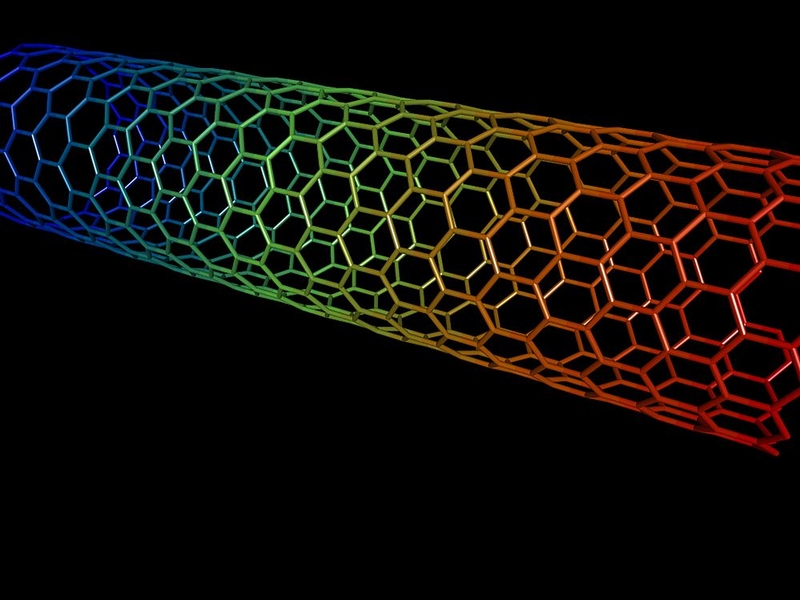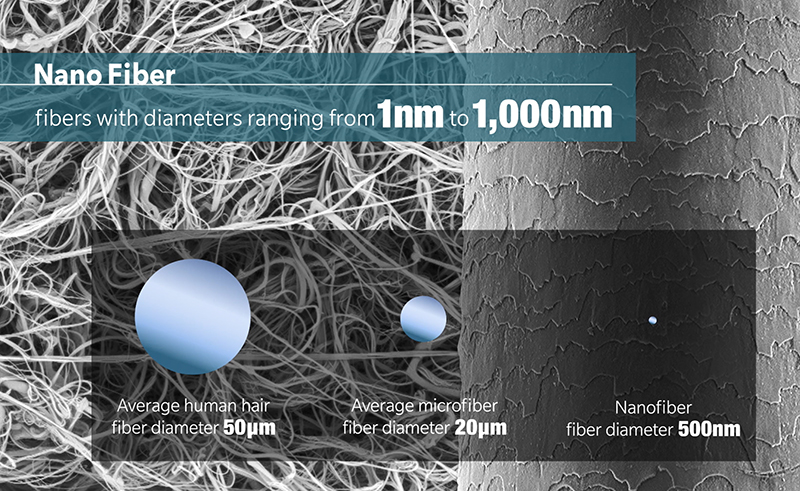
Source: https://www.canterbury.ac.nz/
Introduction:
Have you ever wondered what would be the smallest of the smallest?! well, that leads me to the exciting term “Nano”. The word nano comes from the Greek word called Nanos which means Draft this term is used to describe “one billionth” of something.
In this article, we are going to dig deeper and explore all the factors that you should know about nanostructures. Fire your enthusiasm, cause we are going to see some fun and significant evolutions that are bought by nanostructure in various branches of science and engineering.
What is Nanostructure?
A nanostructure is defined as the structure whose sizes lie in between microscopic and molecular structures with a nanometer-scale range varying from 10-9m
What is Nanoscale?
The nanoscale is used to measure the nanostructures. The size of one nanometer is equal to one billionth of a meter, which is about 100,000 times smaller than the width of a human hair.
What is Nanoscience?
Studying different structures and materials on an ultra-small scale is called nanoscience. nanoscience is used in various branches like chemistry, physics, biology, medicine, computing, material science, and engineering.
What is Nanotechnologies?
Nanotechnology is one of the fast-moving and rapidly evolving branches of technology. Making new things with incredibly small scale structures is called nanotechnology.
Manipulating the matter in different sizes and shapes at the nanometer scale is the formal definition of nanotechnology.
Some Nanomaterials are naturally occurring as you can find them in volcano ashes, seaspray, fine sand, and dust. Natural nanostructures are also found in plants and animals
However, Scientists can create nanostructures by rearranging the atoms of an object. They can make new nanomaterials with new properties, shapes, sizes, and colors.
Nanoscience to Nanotechnology
Nanoscience and Nanotechnology were introduced by a physicist named Richard Feynman in 1959. Nanoscience deals with studying different nanomaterials and their properties. On the other hand nanotechnology explores these properties and creates something new and unique.
Influence of Nanotechnology on different branches
Nanotechnology flourished in many branches of science and engineering with its astonishing innovations.
modern applications of nanotechnology in branches like Physics, chemistry, biology, material science, engineering are growing progressively.
Some of the major applications are as following
- Nanotechnology is used in advanced computing which helps in developing a supercomputer
- Nanotechnology is used in the medical field to diagnose cancer and tumor.
- Nanotechnology also plays a crucial role in electronics by producing conductors and semiconductors
- It is also used in textile engineering in the nanofabrication process.
Types of nanostructures
There are so many different types of nanostructures and these nanostructures are classified according to their dimensions(k=0, 1, 2, 3)and components (l, m, n=0, 1, 2, 3).
In this article, we are going talk about some well know nanostructures
- Nanowires
Definition: Nanowire is a nanostructure with a diameter of 10−9 meters
Synthesis: Nanowires are usually synthesized in two method
a.)top-down
b.)bottom-up
In the top-down approach, a massive piece of material is broken down into multiple smaller pieces on the other hand they are synthesized using the bottom-up approach by combining constituent adatoms. Mostly bottom-up approach is used to synthesize the nanowire.
However, this approach is followed up with the nanowire thermal treatment step to achieve the size and perfect ratio of the structure.
Applications: nanowires are used in electronic devices especially in Mos transmissions, electrochemistry, photonics, gas, and biosensing.
Emerging researches and real-time benefits:
“Nanowires- the future of electronic devices”, Remember the last time when you went overboard to get that quirky, small, slim, and stylized smartphone. well, the demand for small and highly functional electronic devices is increasing day by day.
Attaining such smaller sizes and creating new designs was made possible by nanowires, say, scientists.
nanowires sparkled up the features and bought emerging trends through their efficient conductivity.
Scientists invested more than 50years to minimize the size of transistors in order to produce an electronic device that is high in speed and low in power consumption and budget-friendly at the same time.
Then came the nanowire which not only ticked off every required aspect but also solved a most commonly faced problem which is leakage of electrons.
It acts as a gate by preventing the leakage of electrons; this unique quality attracts many scientists. Apparently, the scope for further exploring and creating electronic devices is also increased.
Examples: Mo6S9−xIx, Li2Mo6Se6
- Nanotubes
Definition: Nanotube is a molecule that is made up of a large number of carbon atoms, this molecule has a diameter of 0.7nm and it was discovered in 1991.
Nanotubes are well known for their novel properties including extraordinary strength and unique electrical properties.
Synthesis: Chemical vapor deposition is the most common method used for the synthesis of nanotubes. Chemical vapor deposition (CVD): this is a coating process that involves thermal-induced chemical reactions at the surface of the heated substrate
Application: Tissue engineering, bone growth, etc.
Emerging researches and real-time benefits:
The image quality produced by the nanotubes are beyond the ordinary compared to today’s x-rays and CT scans, say, researchers from North Carolina.
High strength, low weight, and high flexibility made nanotubes the perfect fit for producing many commercial products
The amazing benefits of nanotubes aren’t limited to commercial products as they are also used in medical fields
Nanotubes are used to treat targeted tumors, early research proved that nanotubes have the ability to kill tumors.
Examples: silicon-coated CNTs, graphene coatings, silicon carbide coatings

Source: https://news.mit.edu/2013/explained-nanowires-and-nanotubes-0411
- Nanofiber
Definition: A nonofiber is a nanostructure with a diameter of less than 100nm.
Synthesis: There are many methods to fabricate nanofiber, some of them are as follows:
- Electrospinning: This method uses the electric charge to get the charged thread polymer solution or it melts down the polymer in order to get fiber diameter some hundred nanometer.
- Thermally Induced Phase Separations (TIPS): This method is used to induce membrane formation by cooling the polymer solution.
Applications: Tissue Engineering, Drug Delivery, Cancer Diagnosis, Optical Sensors, Air Filtration, Oil-water Separation, Sportswear textiles.
Emerging researches and real-time benefits:
The properties like High porosity and high flexibility are shooting up the need for nanofiber.
The applications of nanofiber are limitless. However, nanofiber paved its path in three specific domains and exceptional growth and outlook of these fields are expected by the scientists.
The three domains are
1.healthcare
2.Energy generation and storage
3.water and environment
From the realm of nanofiber, many real-time innovations were bought under the spotlight. In recent times nanofiber replaced lithium-ion batteries by serving as potential electrode material for batteries and fuel cells.
The great absorption capacity of Nanofiber became an added advantage in the purification and filtration process of water and air.
Nanofibers are also making remarkable changes in medicine by delivering benefits like wound dressing, biological sensing, and drug and therapeutic injuries.
Examples: polylactic acid(PLA), polycaprolactone(PCL) etc.

- Nanobelts
Definition: nanobelt is defined as a rigid belt structure with 12 fully fused benzene rings.
Synthesis: synthesis of nanobelts has been a goal in organic chemistry for more than 60years however in the recent issues of science Itami and coworkers reported a successful synthesis of nanobelt by using wittig reaction followed by intermolecular Yamamoto coupling
Application: solar cells, gas sensors, biosensors, and so on
Emerging researches and real-time benefits:
In japan a massive form of iptycene is created by the diels-Alder reaction, this reaction involves carbon nanobelts, alkynes, and arynes.
Carbon nanobelts will be the structure blocks for huge macrocyclic carbon-based structures.
Examples: TiO2
- Nanofluids
Definition: nanofluids are the fluids that are made up of nanoparticles like metals, oxides, carbides, or carbon nanotubes.
Synthesis: nanofluids are usually synthesized by a one-step method or two-step method.
A one-step process involves continuous making and dispersing the particles into a fluid.
In the two-step method, the particles are first made into a dry powder form by chemical and physical methods. then the nanosized powder will be dispersed into a fluid.
Application: nanofluids are used in coolants and heat transfer equipment such as heat exchangers, electronic cooling system
Emerging researches and real-time benefits:
Nanofluids gave a lift to biomedical applications like diagnosis and therapy.it is also used in drug delivery systems, antibacterial activities, and imaging, etc.
Nanofluids are also known for their great thermal conductivity, as per the observation of Das and Choi 2006, it showed up some peculiar properties like high thermal conductivity, stability, newtonic behaviour and decreasing particle size.
These unique qualities added up the chances of using nanofluids in various fields in the future.
Examples: aluminum (Al), copper (Cu), silver (Ag), iron (Fe), titanium (Ti), silicon (Si), zinc (Zn) are the commonly used nanoparticles to produce nanofluids
- Nanoparticle
Definition: A nanoparticle is defined as the tiniest particle of a matter with a diameter ranging between 1 to 100nm
Synthesis: the bottom-up approach is prominently used to synthesis the nanoparticle as it is built up material from the bottom
There are many methods to create nanoparticles, some of them are gas condensation, attrition, chemical precipitation, hydrothermal synthesis, etc.
Applications: The nanoparticles are used in various fields like agriculture, automobiles, construction, cosmetics, electronics, environment, food, home appliances, medical, petroleum, etc.

Emerging researches and real-time benefits:
The science of small has numerous real time applications and emerging rapidly from the shell. Especially,in the case of nanoparticles, there are tons of research going on a daily basis and obtaining phenomenal results.
Nanoparticles are driving through fields like nanomedicine, engineering, and the environment.
The term nanomedicine came from the application of nano in the medical field. In nanomedicine treatment and prevention of various diseases is done by using nanodevices and nanoparticles
Examples: titania [titanium dioxide], silica [silica dioxide] particles, and liposomes, vesicles, and nanodroplets.
Irrespective of the above-mentioned nanostructures there are many nanostructures like nano springs, nanocapsules, nanosheets, quantum dots, nanocomposites, etc.
Major applications of nanotechnology:
There are”n” number of applications bought by nanotechnology. however, we put together some major real-time applications that improved the quality of living like health technology,manufacturing methods, water purification systems, energy systems, physical enhancement, nanomedicine, better food production methods, nutrition, and large-scale infrastructure auto-fabrication
Further scope:
Nanotechnology has no limitation when it comes to growth as it is stepping up in every single aspect by making unbelievable changes.
But scientists are believing that nanotechnology can bring massive changes especially in the field of medicine as it can cure some serious illness and diseases.
As we all know by now nanotechnology is playing a vital role in many branches of science and technology. Currently, nanotechnology is the booming field after IT and the internet.
It is estimated that” NANOTECHNOLOGY” can fulfill many objectives and goals in various fields from agriculture to engineering.
Conclusion:
In this article, you will get answers for all your whats and whys related to nanotechnology as we pinned out every single detail clearly.
We covered many aspects of how the word nano was born to how nanotechnology evolved and continuously changed by introducing problem-solving solutions in various fields.
Reference
https://www.science.org.au/curious/nanoscience
https://copublications.greenfacts.org/en/nanotechnologies/l-3/1-introduction.htm#0p0
https://www.nanowerk.com/nanotechnology/introduction/introduction_to_nanotechnology_22.php
https://www.sciencedirect.com/science/article/abs/pii/S0928493106003353
https://www.sciencedirect.com/science/article/pii/S245192941730178X
https://phys.org/news/2016-03-ways-nanotechnology-future.html
https://pubs.rsc.org/en/content/articlelanding/2007/jm/b709983e/unauth#!divAbstract
https://www.sciencedirect.com/science/article/pii/S0079670017300692















One Response